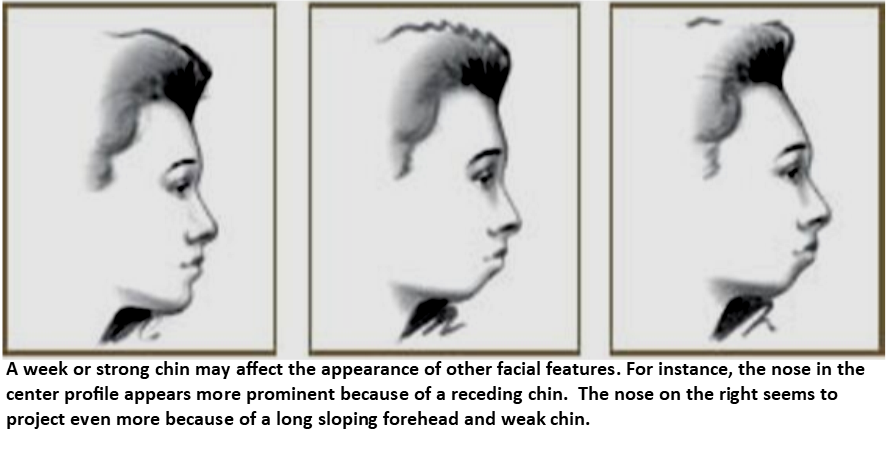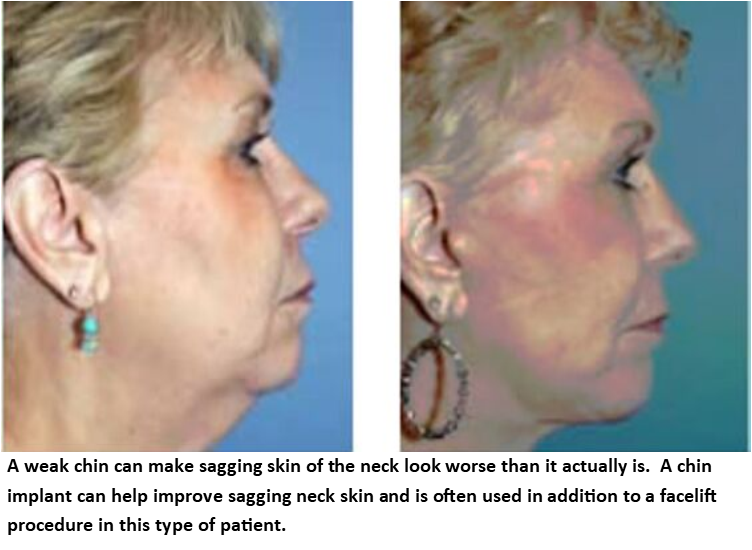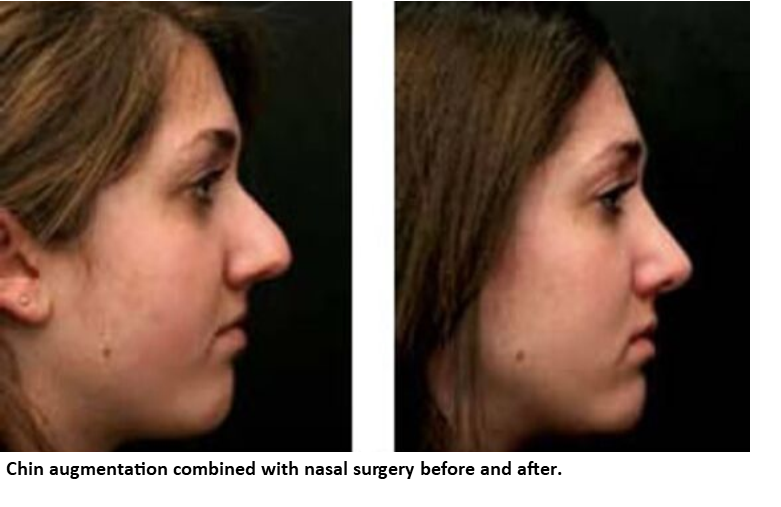Chin Surgery
Understanding Mentoplasty
A well defined chin helps give balance to the face and creates a major part of one’s profile. When people look in the mirror, most focus on the size and shape of their noses, their ears, sagging jowls, or fine wrinkling of the skin. But even though few examine their chins with the same discerning eye, having a “weak chin” is certainly not an asset. Surgeons who specialize in rhinoplasty, or surgery of the nose, are often the first to suggest that changes in chin size or shape may enhance a profile as much as rhinoplasty. It is common for the facial plastic surgeon to recommend chin surgery in addition to nose surgery when the surgeon sees that chin augmentation is necessary to achieve facial balance and harmony. Fortunately, this is a relatively straightforward procedure that can make a major difference.
I was surprised when my facial plastic surgeon suggested a chin implant when I went in for a rhinoplasty. I never thought that a weak chin can make your nose appear more prominent.
— jeanines., age 21

Understanding the Surgery
To augment the chin, the surgeon begins by making an incision either in the natural crease line just under the chin or inside the mouth, where gum and lower lip meet. By gently stretching this tissue, the surgeon creates a space where an implant can be inserted. This implant, made of synthetic material that feels much like natural tissue normally found in the chin, is available in a wide variety of sizes and shapes. This allows custom fitting of the implant to the configurations of the patient’s face. After implantation, the surgeon uses fine sutures to close the incision. When the incision is inside the mouth, no scarring is visible. If the incision is under the chin, the scar is usually imperceptible.
In chin reduction surgery, incisions are made either in the mouth or under the chin. The surgeon sculpts the bone to a more pleasing size. For orthognathic surgery, the surgeon will make an incision inside the mouth and reposition the facial bones. The procedure, depending on the extent of the work, takes from less than an hour to approximately three hours.
Improving the shape of the chin can be accomplished with several techniques. A consultation with a facial plastic surgeon can provide you with the information you need to make the best choice.


What to Expect After the Surgery
Immediately after surgery, the surgeon usually applies a dressing that will remain in place for two to three days. You will experience some tenderness. Post-operative discomfort can be controlled with prescribed medications. Chewing will probably be limited immediately after chin surgery, and a liquid and soft food diet may be required for a few days after surgery. Most patients feel a stretched, tight sensation after the surgery, but this usually subsides in a week.
After approximately six weeks, most swelling will be gone, and you can enjoy the results of your procedure. Rigorous activity may be prohibited for the first few weeks after surgery. Normal activity can be resumed after approximately ten days.
Facial plastic surgery makes it possible to enhance your appearance and eliminate signs of premature aging that undermine self- confidence. By changing how you look, facial plastic surgery can improve your self-image.
Insurance does not generally cover surgery that is purely for cosmetic reasons. Surgery to correct or improve genetic deformity or traumatic injury may be reimbursable in whole or in part. It is the patient’s responsibility to check with the insurance carrier for information on the degree of coverage.
The shape of the chin has a remarkable influence on the overall appearance of the face and neck. Improving the shape of the chin can have positive effects on other areas that you might not anticipate.